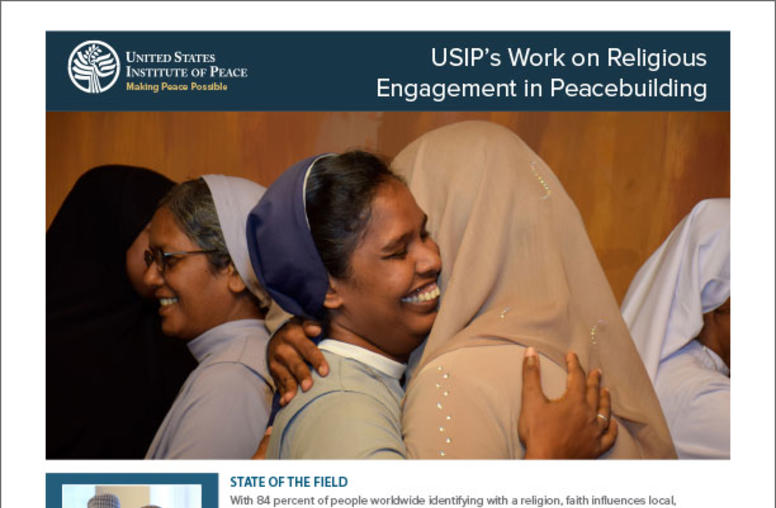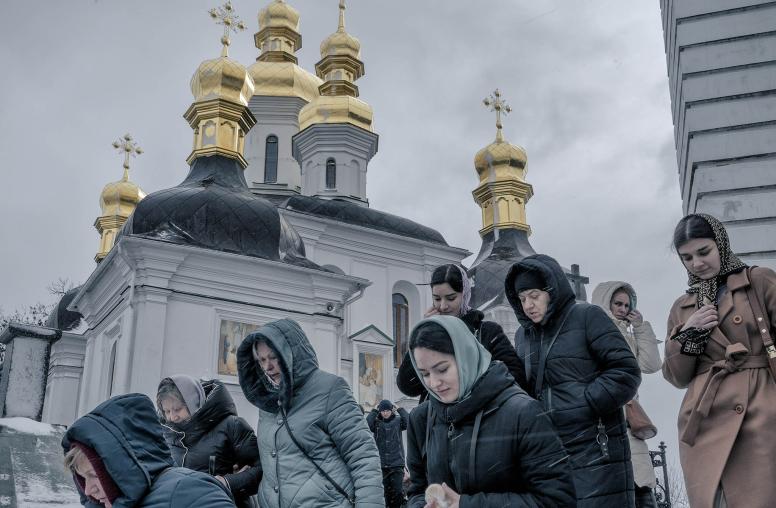Human Rights Education as the Solution to Religious Persecution
There is a need to harness education's power to prepare students for a multi-ethnic, multi-religious future.
Persecution on account of religion or belief confronts every community somewhere around the world—and it is an increasing trend. Challenges range from terrorist violence against minorities, such as ISIS’ depravations against Yazidis, to persecution by authoritarian governments, with China’s targeting of all faiths a prime example. To organize a defense of freedom of conscience and belief, the United States convened the Ministerial to Advance Freedom of Religion or Belief in 2018 and 2019, bringing together a virtual congress of nations and civil society activists from around the world. The third ministerial, organized by Poland, was held virtually in mid-November. Discussions identified challenges but also solutions. One consistent answer to the vexing problem of persecution was proffered: educating youth about human rights and pluralism.

Countries as diverse as Bangladesh, Bahrain, and Germany emphasized education during the ministerial, noting the importance of creating global citizens who respect human rights and pluralistic societies. Others cited the United Nations’ Sustainable Development Goals, such as goal 4, which highlights the need to "ensure inclusive and equitable quality education and promote lifelong learning opportunities for all," and goal 16, which speaks of promoting "peaceful and inclusive societies" with "effective, accountable and inclusive institutions at all levels."
A consensus is beginning to emerge that encouraging more tolerant communities through education can increase respect for religious pluralism and protect freedom of religion or belief.
The ministerial speakers were right to raise education as a long-term solution to increasing persecution. The world is an increasingly interconnected and diverse place, with people from different religions, ethnicities, and cultures are intermixing as never before. The Pew Research Center reports that 84 percent of the global community believes in God or a higher power. And the world is young. According to the World Bank, a large youth bulge exists in the developing world, with significant percentages of the population under 30. At the same time, Pew recently released findings that almost 60 percent of the earth’s population lives in countries with very high restrictions on faith practices, either by governments or societal actors.
These trends taken together require new approaches for teaching students the importance of human rights, peaceful coexistence, and pluralistic societies. Why? Because young minds are susceptible to hateful ideologies. Dark actors actively promote prejudicial and violent worldviews, creating a mindset that leads to human rights abuses and instability. We need to respond with a positive message.
A Double-Edged Sword
Over my career, I have seen how some education institutions explicitly or implicitly promoted religious discrimination, failing to instill an appreciation for diversity or human rights. In other cases, curricula omit historic religious diversity or teach "revisionist" history that diminishes minority faith communities' role. A reoccurring concern for religious minorities is education systems attempting to inculcate the majority faith's beliefs on their children without the parents' consent or provision of a viable, non-sectarian alternative.
To inoculate youth and get upstream of these challenges, teaching about pluralism can foster peaceful societies, protect human rights, create resilient communities, and reduce conflict and violent extremism. However, despite our increasingly diverse and interconnected world, the international donor community has generally steered away from these topics, focusing on core subjects of reading, writing, and arithmetic. There is a need to harness education's power to also prepare students for this multi-ethnic, multi-religious future.
Opportunities Emerge Amid the Pandemic
The COVID pandemic provides an inflection point to devise innovative strategies and new educational approaches targeting national education policies, curricula, teacher training, and student outcomes. The goal is straightforward: Improved learning outcomes for students that increase their awareness of pluralistic societies, expand understanding of different belief systems and practices, and instill respect of the individual rights of conscience. The international community can directly engage education officials on teacher training and curriculum development. Funders can leverage their grantees' expertise for new programmatic ideas on how best to promote peaceful coexistence in pluralistic societies and foster respect for human rights. None of these must come at the expense of traditional work but can be married with long-standing efforts.
Though it will be challenging in some environments, these topics are too important to ignore. But by failing to act, children learn to fear or hate "the other," and human rights abuses will follow. Mainstreaming teaching about human rights, peaceful coexistence, and pluralistic societies will prepare students to succeed in our increasingly diverse world. Evidence shows that societies appreciating religious pluralism are more peaceful, less violent, and protect human rights.
Hopefully, the Ministerial to Advance Freedom of Religion or Belief can jumpstart a needed conversation. The Abu Dhabi Guidelines for Teaching Interfaith Tolerance, connected to the ministerial process, provides an expansive menu of options. Harnessing the power of education will, over the long-term, build a greater understanding of the benefits of pluralism and get upstream of human rights abuses, creating a more peaceful world.



